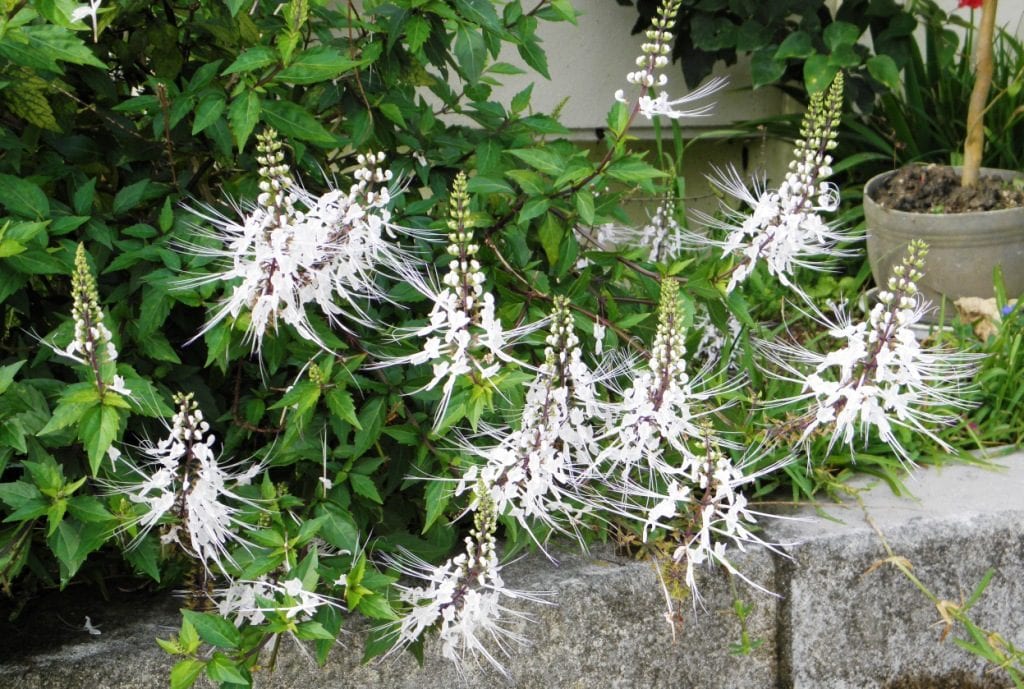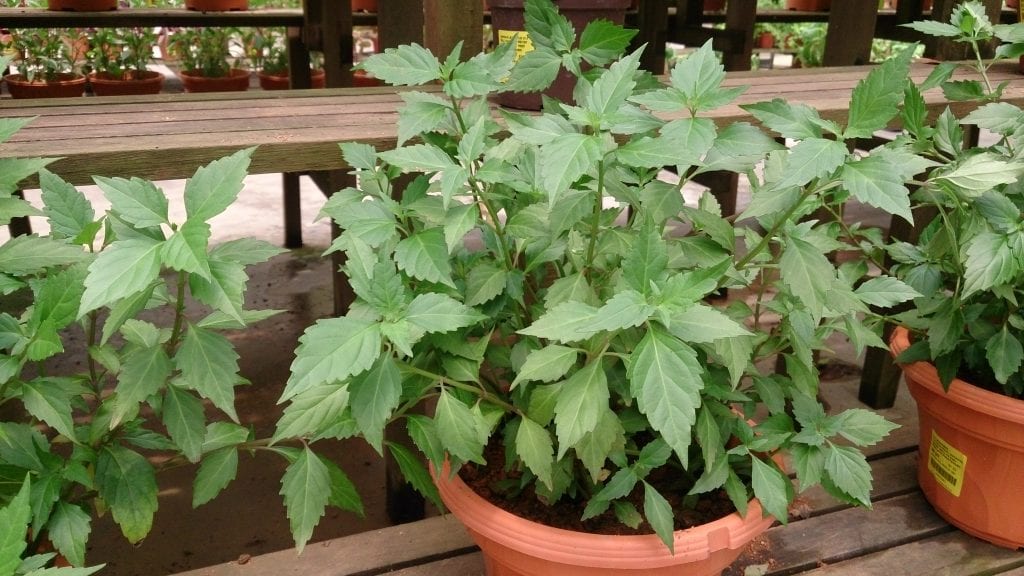
El orthosiphon It is a very interesting plant: when it blooms, it is quite a spectacle because very curious inflorescences of white and blue color sprout, but also, it can also be used as medicinal, being one of the best allies for those who have health problems such as cystitis or spider veins (the "varicose" that appear on the legs if we sit or stand for a long time).
So if you want to know more about it, its characteristics, its care, among other things, then I'll explain everything to you 🙂.
Origin and characteristics

Our protagonist is an evergreen herbaceous shrub (it remains evergreen) native to southern China, India, Southeast Asia and Queensland (Australia). It is popularly known as Java tea or simply ortosifón. Its scientific name is Orthosiphon aristatus, and reaches a height of up to 1,5 meters.
It has simple leaves, with a toothed margin, pointed ends and well visible veins. These are green. The flowers are grouped in inflorescences composed of filaments that resemble a cat's whiskers.
What are their cares?
If you want to have a copy, we recommend that you provide it with the following care:
Location
It is important that you place it abroad, in full sun or in semi-shade. In case of opting for this last option, it is necessary that it be in an area where it gives more light than shade since otherwise its flowering will not be of the quality it should be.
Earth
- Flower pot: universal culture substrate mixed with 30% perlite.
- Garden: it is indifferent as long as it has good drainage and be fertile.
Irrigation
Frequent. In general, you have to water 3 times a week in summer, and every 4-5 days the rest of the year. Use rainwater or lime-free.
Subscriber

During the warm months of the year (from the beginning of spring to the end of summer), it is advisable to fertilize with organic fertilizers (guano, herbivorous animal manure, compost u others) once a month. In addition, you must bear in mind that if you are going to grow it in a pot, you must use fertilizers in liquid form so that the drainage continues to be good.
Pruning
Late winter You must remove dry, diseased or weak branches. You can also take advantage to trim those that are growing too much, giving it a messy look.
Multiplication
The ortosifón multiplies by seeds in spring. The step by step to follow is the following:
- First, a seedling tray is filled (you can get it here) with universal growing substrate.
- Second, it is watered abundantly, so that the substrate is well soaked.
- Third, a maximum of two seeds are placed in each socket, and covered with a thin layer of substrate.
- Fourth, it is watered again, this time with a sprayer.
- Fifth, the seedling tray is inserted into a tray without holes, and placed outside, in full sun.
Each time you water, something that you will have to do often to prevent the substrate from drying out, you will direct the water to the tray without holes. A) Yes, will germinate in 14-20 days more or less.
Pests
It is quite resistant, but if the growing conditions are not suitable, it can have some of the most common pests on plants, such as cochineal, aphid or the Red spider. To combat them, specific or natural insecticides should be used, such as neem oil or potassium soap.
Management
If overwatered, It could be attacked by fungi that would cause brown spots on the leaves and / or stem rot and / or roots.
Rusticity
Resists cold and weak frosts down to -4ºC. If you live in an area where the minimum temperature is lower, I advise you to protect it in a greenhouse or inside the house in a cold room, without drafts, and bright.
What uses does it have?

Ornamental
The ortosifón has a great ornamental value. It can be had both in a pot and in the garden, in the patio, or as a border plant along with others of its species.
Medicinal
Its most popular use, however, is medicinal. By having a high content of potassium and essential oils, used to relieve symptoms of bladder and kidney disorders, such as cystitis, renal lithiasis (kidney stones) and urethritis. Also against varicose veins and spider veins for its draining effect.
In addition, it can be used for both weight loss and maintenance.
You will get it in pills (in pharmacies or herbalists) and of course also in the plant. In any case, you should consult with your doctor before starting a treatment with medicinal plants.

And with this we are done. What did you think of the orthosiphon? Have you heard of him? Now you know that if you want to have a different plant, with it you can enjoy those places 🙂.